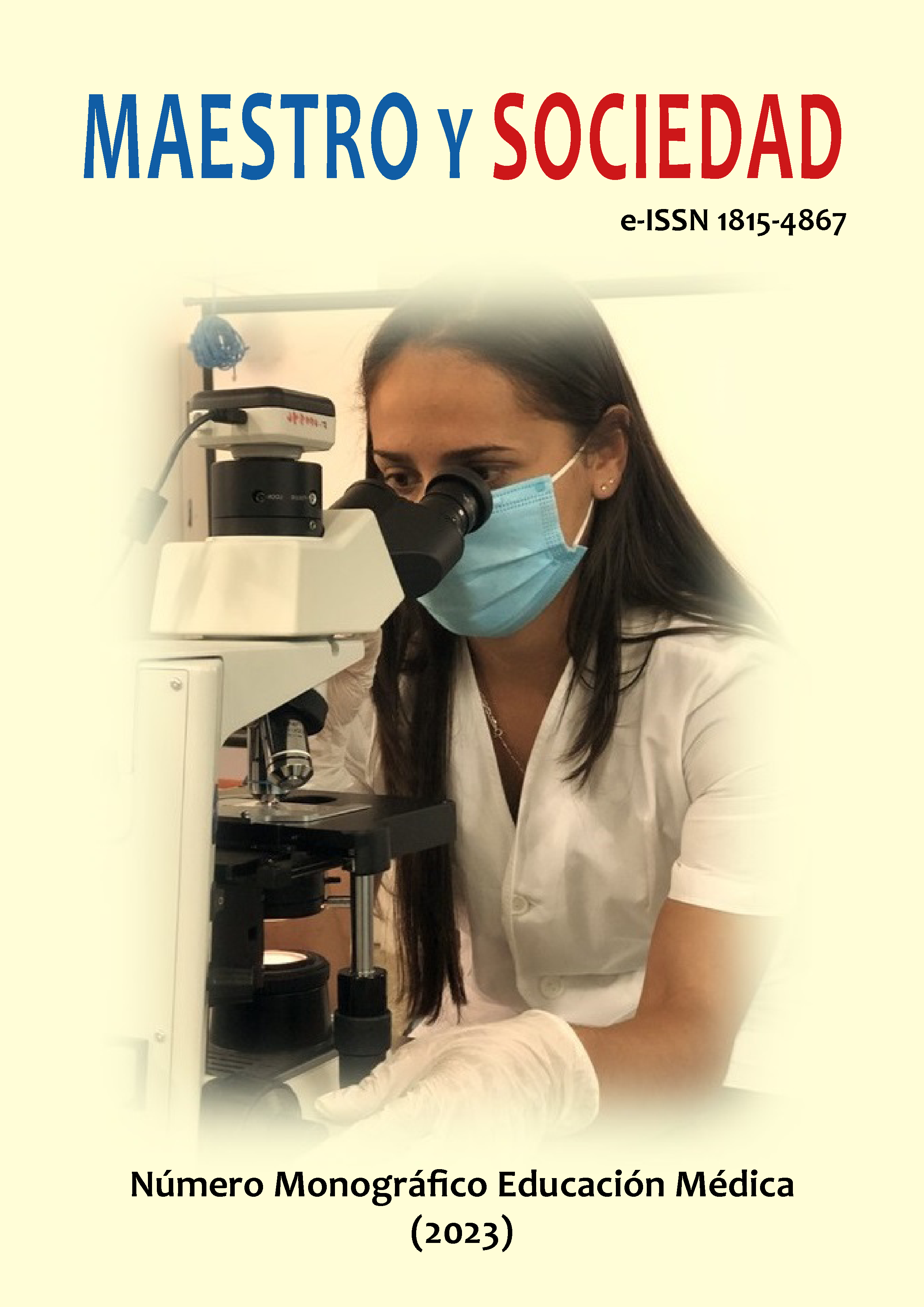Effectiveness of mucin histochemical staining in the diagnosis of malignant lesions of the prostate
Keywords:
prostatitis, benign prostatic hyperplasia, prostate cancer, Alcian blue and periodic acid Schiff in their different combinationsAbstract
Introduction: Prostate cancer is one of the main causes of death in the world and it is predicted by the World Health Organization (WHO) that in the next 10 years 84 million people will die for this reason if no action is taken; That makes it an important health problem for humanity. Materials and Methods: In this work, the effectiveness of the histochemical staining techniques periodic acid Schiff (PAS), Alcian Blue and PAS-Alcian Blue for the differential diagnosis between benign hyperplastic lesions of the prostate and well-differentiated adenocarcinoma was evaluated. For this, an analytical and comparative study was carried out with the data collected from the Statistical Registry of Biopsies for a universe of 553 ballots, which remain archived in the Department of Pathological Anatomy of the General Teaching Hospital “Dr. Juan Bruno Zayas Alfonso” from Santiago de Cuba during the period 2018-2019. Results: 98.44% of benign hyperplasias were found to be positive with PAS and none of them with Alcian Blue, while 49.1% of all carcinomas were positive with the latter. Of the well differentiated, only 3 were positive with the PAS, neutral mucin (1.9%). Discussion: These results are similar to the investigations carried out by Durgaprasad N Agrawal et al., in which a positivity for prostatic hyperplasia (neutral mucin-PAS) and for prostate adenocarcinoma (acidic mucin-PAS) was found. Alcian Blue) of 46.66%, in relation to hyperplasia and cancer. Conclusions: Histochemical mucin stains with Periodic Acid of Shiff (PAS) and Alcian Blue 2.5 pH (AB) are effective techniques that can be used to differentiate well-differentiated adenocarcinoma of the prostate from other benign lesions of the prostate. Although acidic mucin is not present in poorly differentiated carcinomas, it is useful for the differential diagnosis of benign lesions.
References
Agrawal DN, Zawar MP, Deshpande NM, Sudhamani S. (2014). The study of mucin histochemistry in benign and malignant lesions of prostate. J Sci Soc, 41:38-40. http://www.jscisociety.com/text.asp?2014/41/1/38/126751
Álvarez-Blanco MA et al. (2008). Cáncer de próstata. Rev Mex Urol; 68(4):250-259. http://new.medigraphic.com/cgi-bin/resumen.cgi?IDREVISTA=47&IDARTICULO=8770&IDPUBLICACION=942&NOMBRE=Bioquimia
Anuario Estadístico de Salud. (2021). Dirección de Registros Médicos y Estadísticas de Salud. www.sld.cu/sitios/one/
Cano Santana N., Jerez López A., Zaragoza Durañona R. (2013). Factores de riesgo para el cáncer de próstata en el Hospital Ernesto Guevara de Las Tunas. Rev Cub Urología 2013;2(2).
Fernández Marichal FS., Toirám García R., Varela Álvarez A., Segura Roque O. (2015). Cáncer prostático: correlación entre el valor del antígeno prostático específico y el resultado anatomoclínico. Rev. Arch Med Camagüey;19(1):42-9.
García García A., Matos Lobaina E., Gómez Rubino E., Guerra B., de las Mercedes Y. (2013). Obesidad y estilo de vida en los pacientes con cáncer de próstata. Rev Cub Urología; 2(2).
Jaramillo LF, Uriza, LF. (2005). Uso e interpretación de las pruebas diagnósticas. Rev Colomb de Radiología, 16(4), 1852-1858.
Mathur SK, Gupta S, Marwah N, Narula A, Singh S, Arora B. (2003). Significance of mucin stain in differentiating benign and malignant lesions of prostate. Indian J Pathol Microbiol, 46(4), 593-5.
Nodal Laugart RL, Rodríguez Ardi M, Tamayo Domínguez FA. (2011). Responsabilidad individual en la detección temprana del cáncer de próstata. Medisan; 15(7), 958.
Organización Mundial de la Salud (OMS). Control de cáncer aplicación de conocimientos. Guía de la OMS para desarrollar programas eficaces. Ginebra. 2019
Rivero Ojeda J., Sabatier C., Gómez Cruz Y. (2013). Cáncer de próstata con antígeno prostático normal. Rev. Cub. Urología, 2(2). http://www.revurologia.sld.cu/index.php/rcu/issue/view/4
Stevens A., Louve J. S. (1998). Histología Humana 2da ed. Harcourt Brace.
Published
How to Cite
Issue
Section
License
Copyright (c) 2023 Hemeregildo Meriño Veranes, Karelia García Pérez, Yarlin Lescay Rodríguez, Maidilis Beltrán Moret

This work is licensed under a Creative Commons Attribution-NonCommercial-NoDerivatives 4.0 International License.
This journal provides immediate open access to its content, based on the principle that offering the public free access to research helps a greater global exchange of knowledge. Each author is responsible for the content of each of their articles.



























 Universidad de Oriente
Universidad de Oriente 